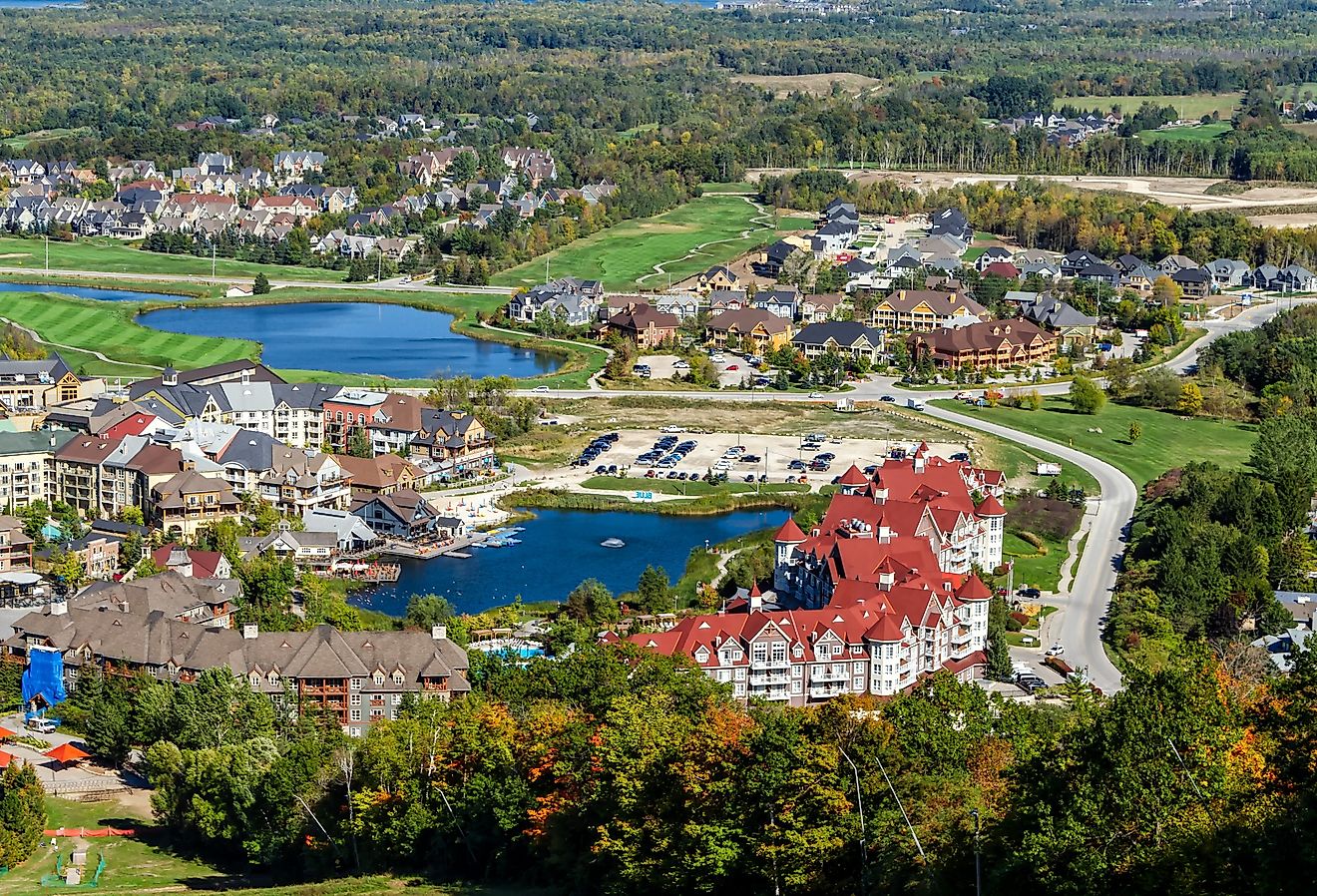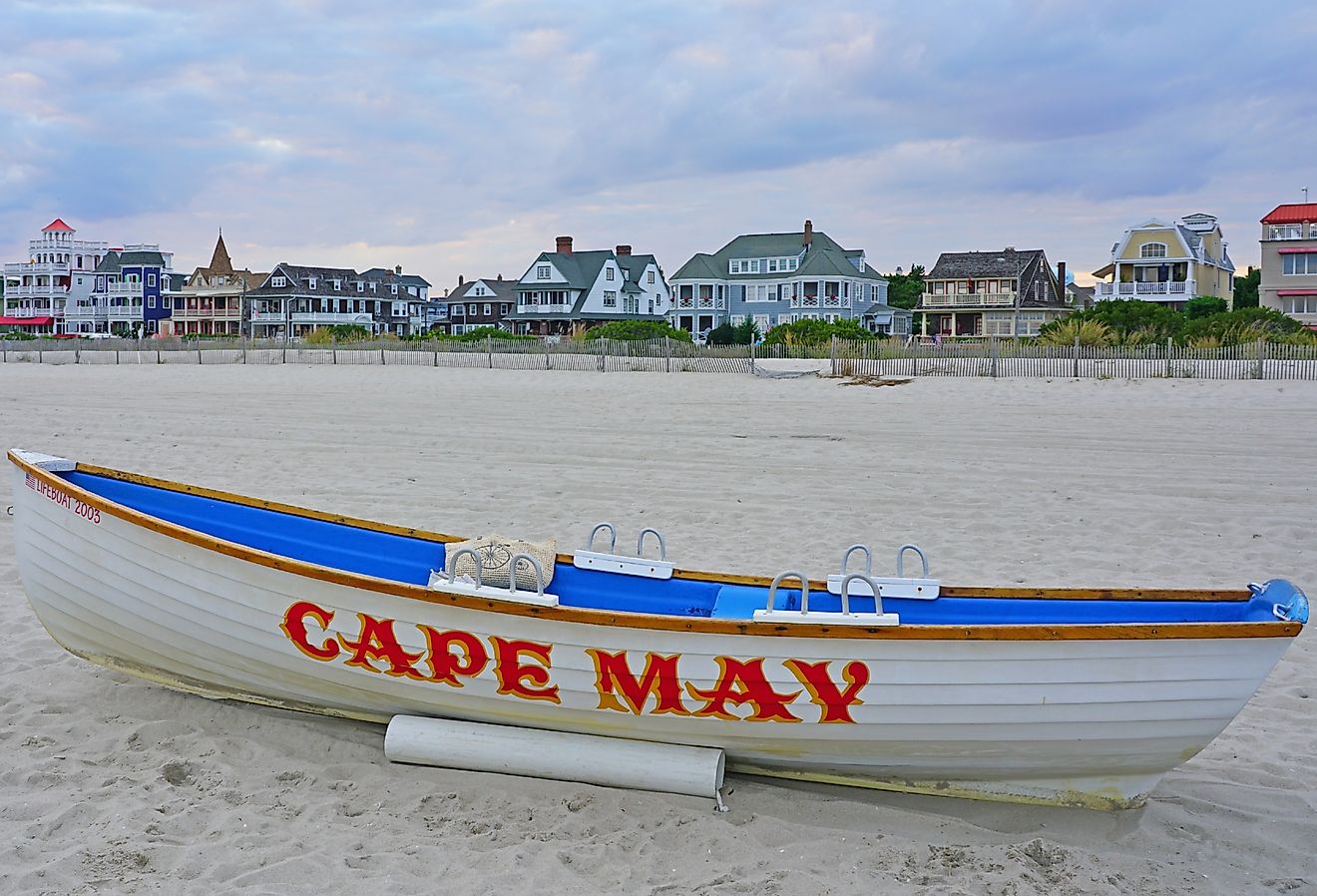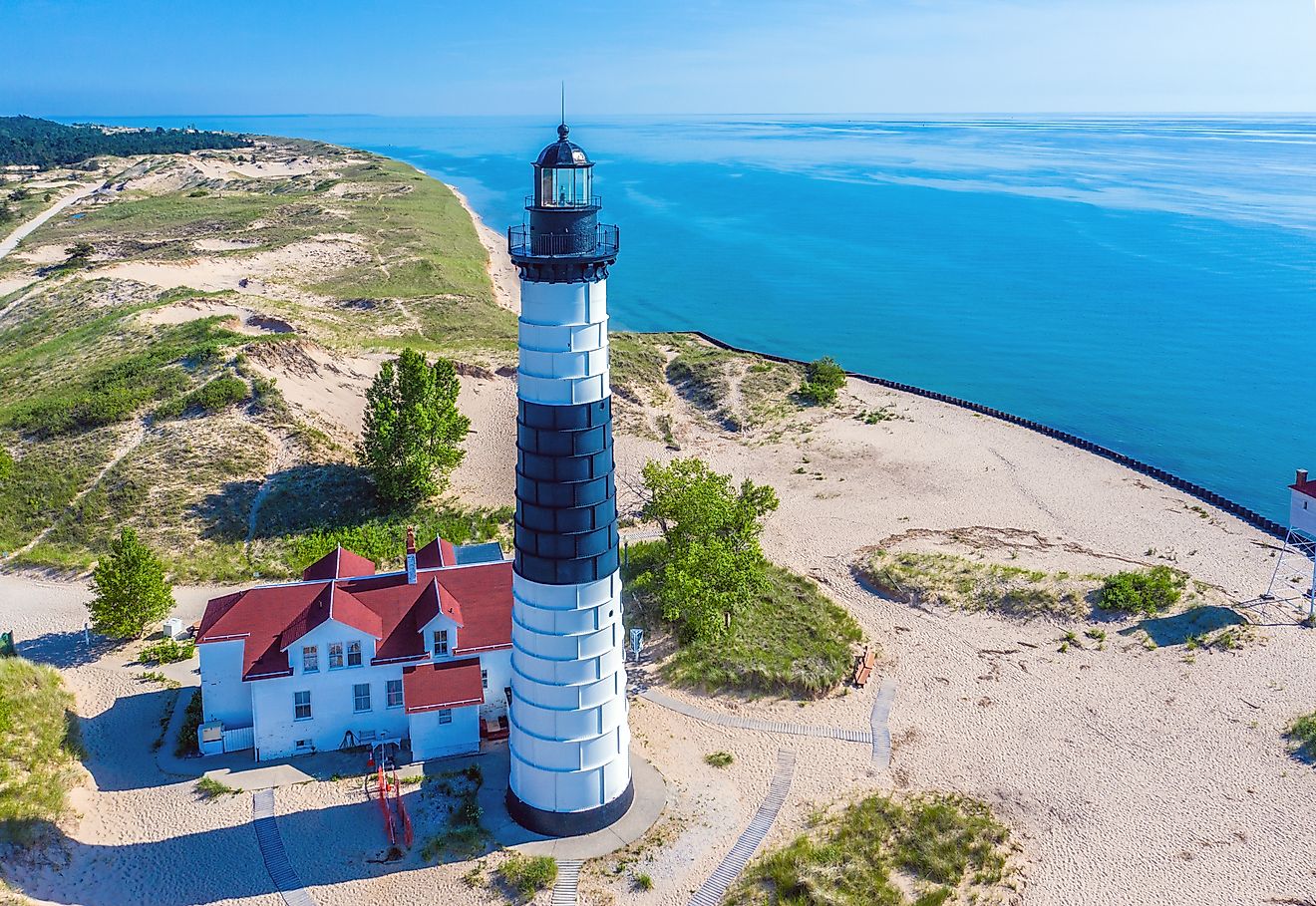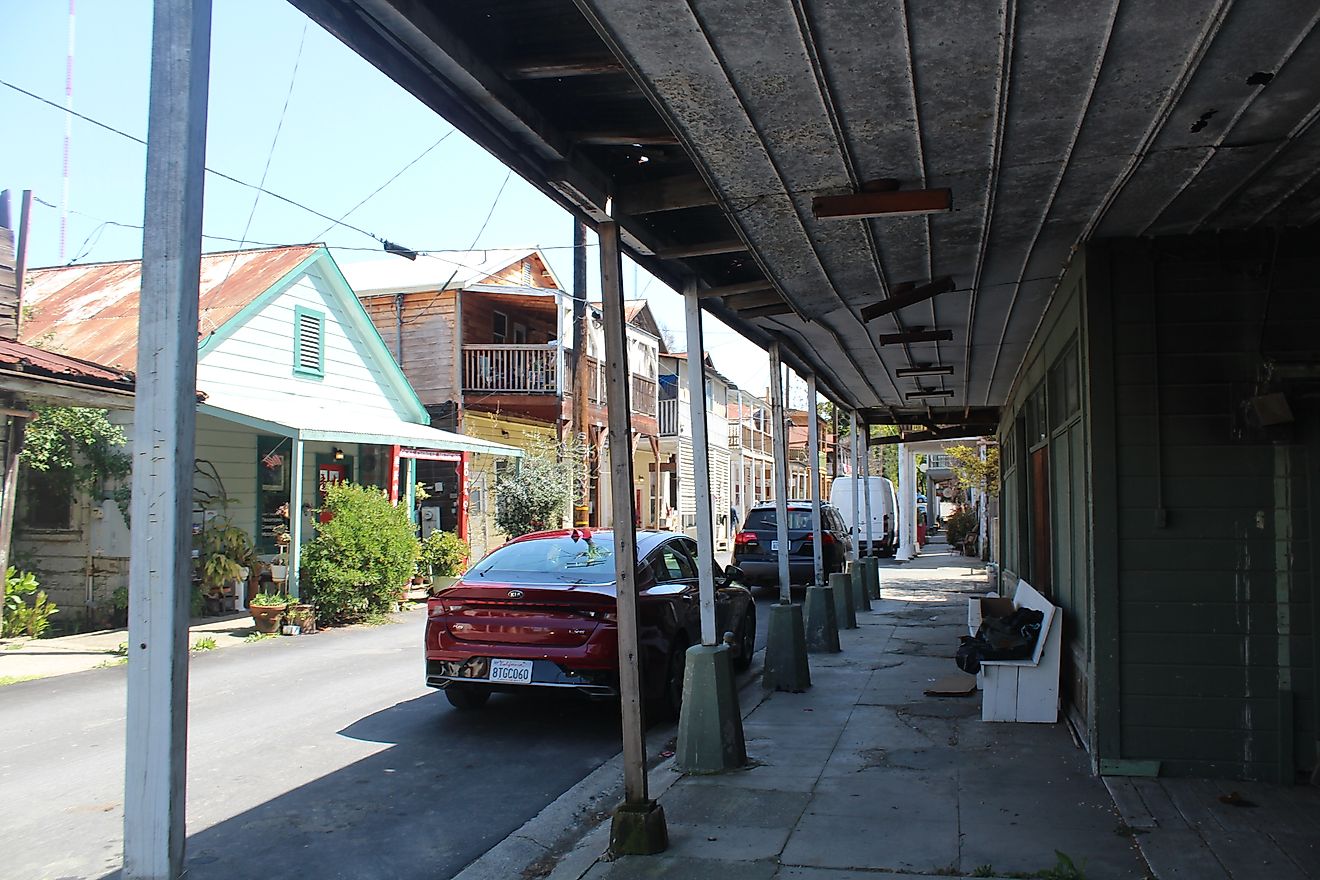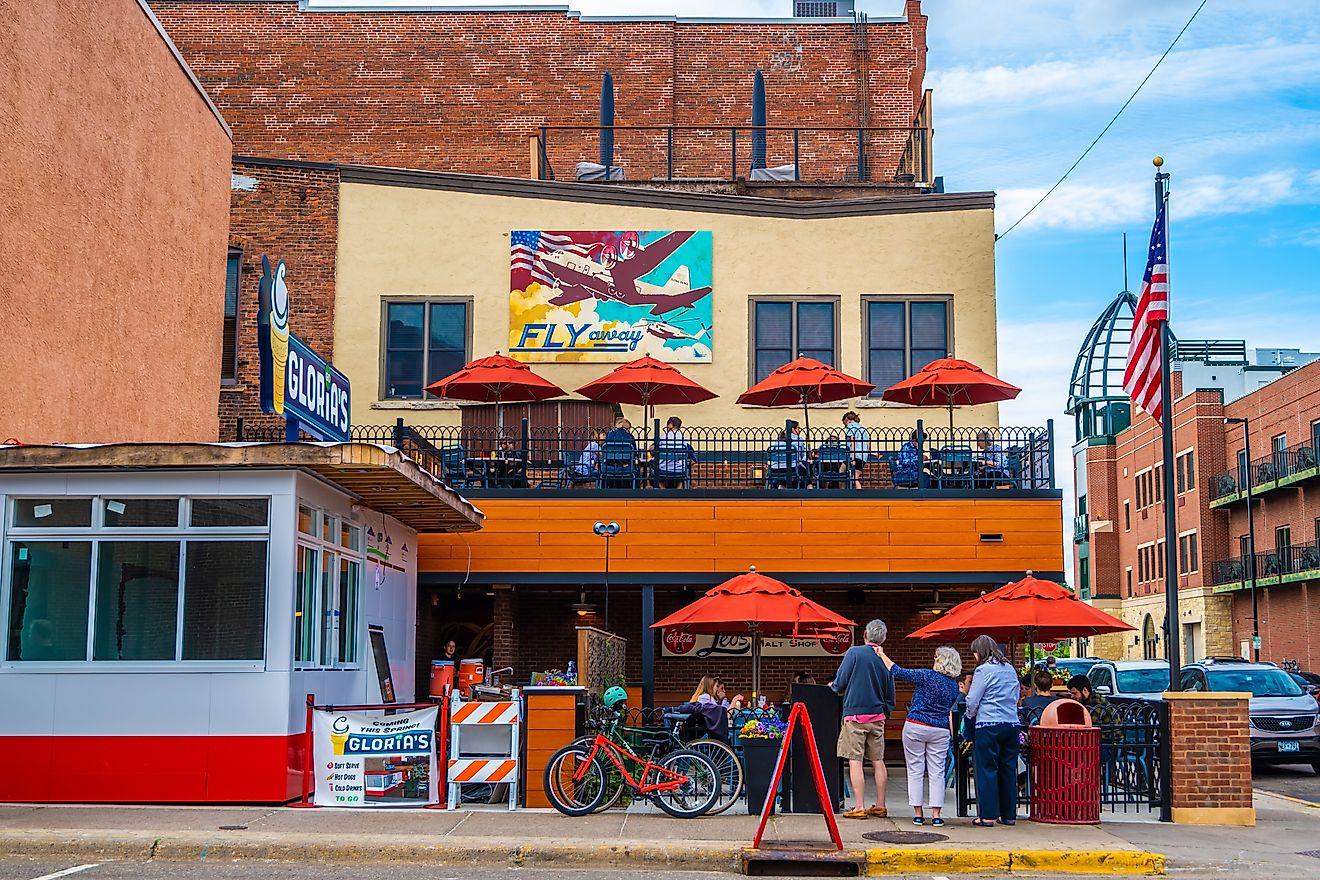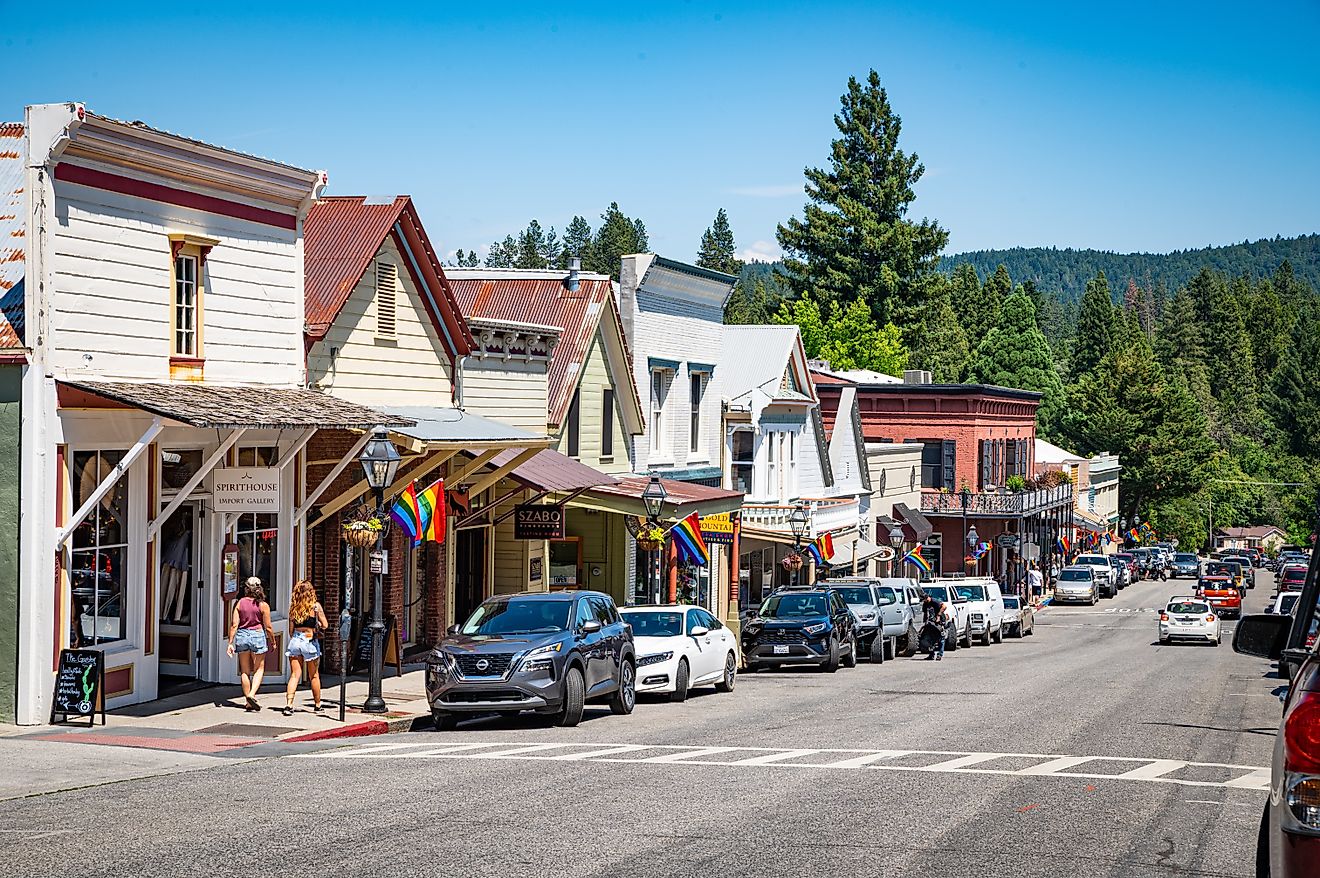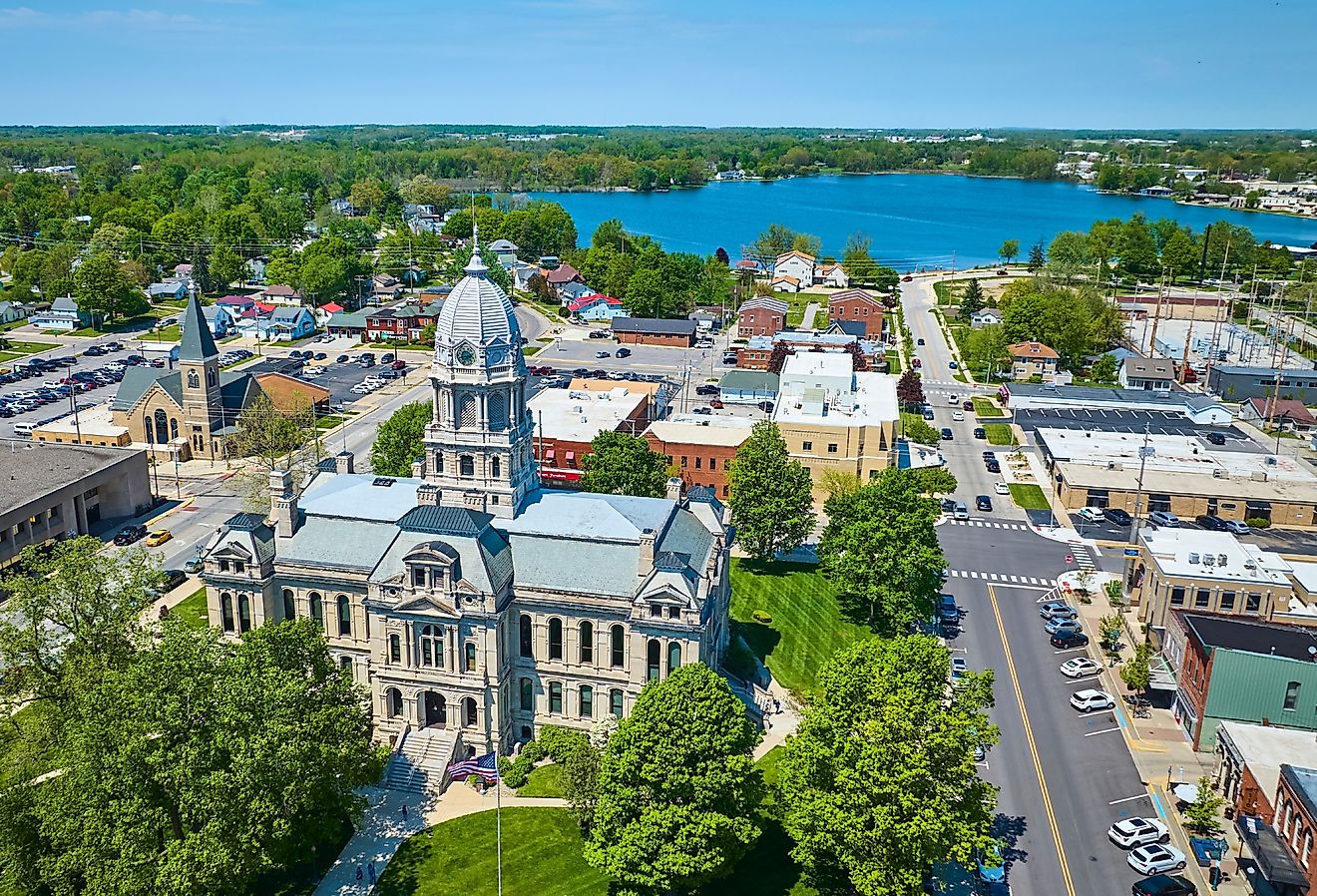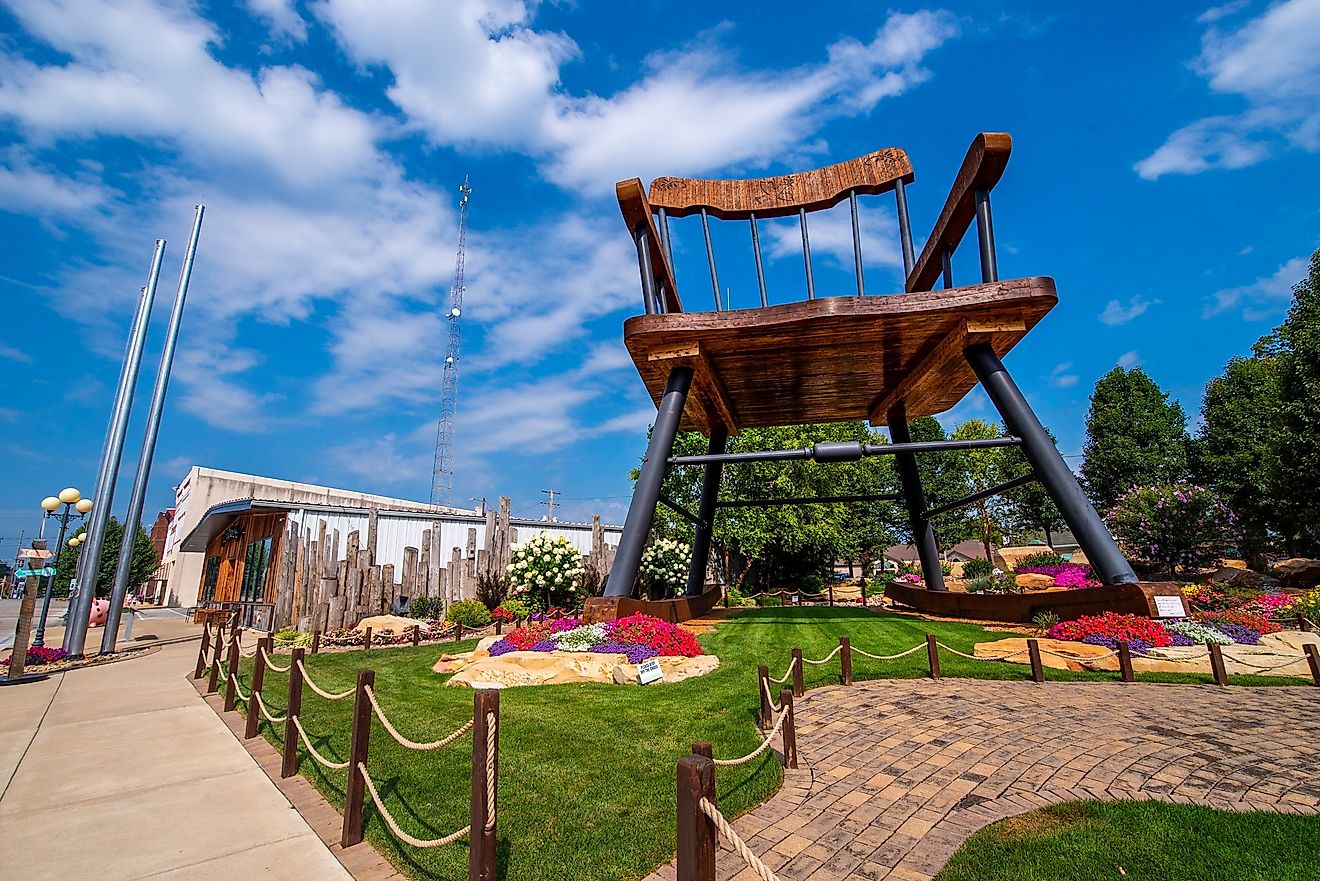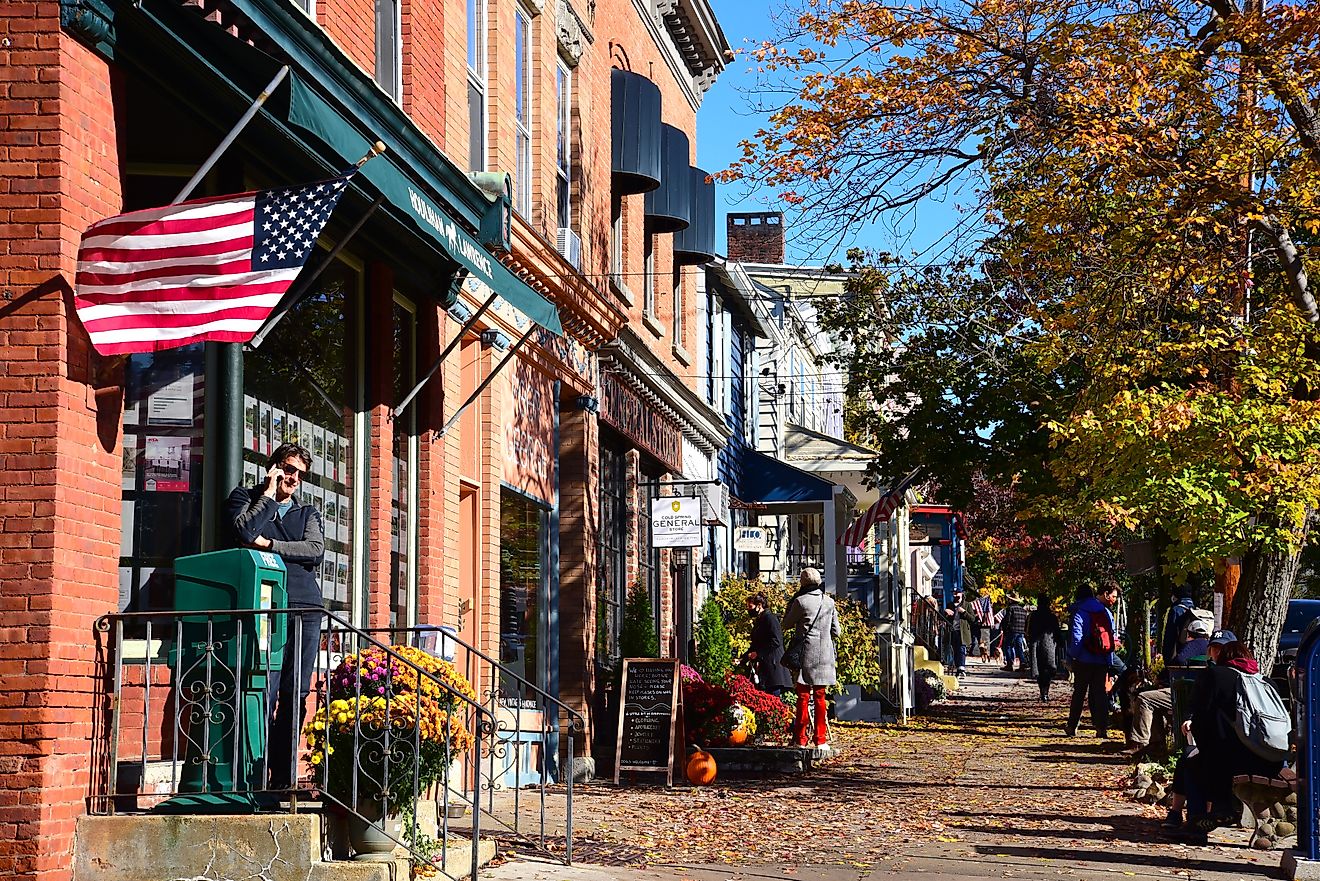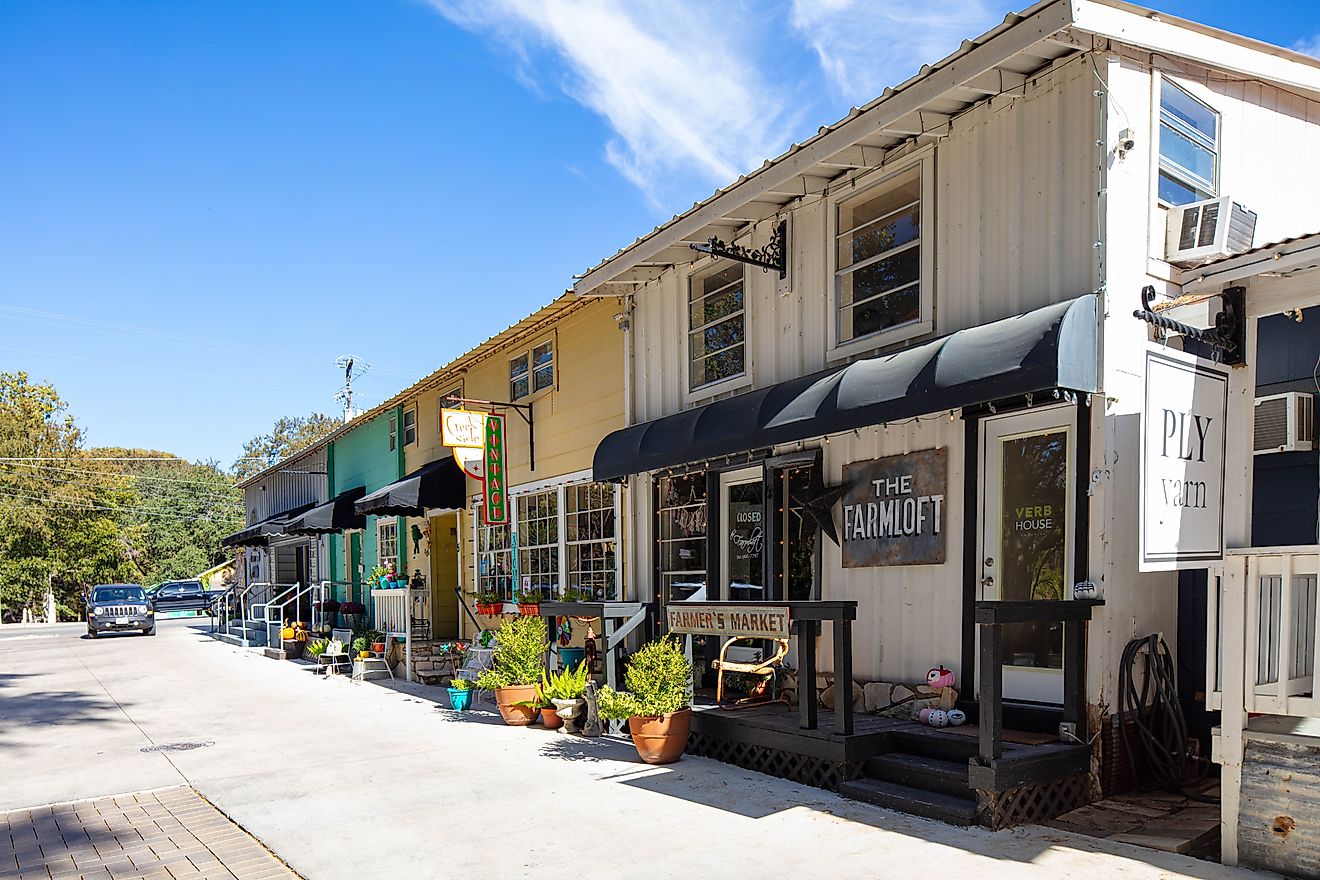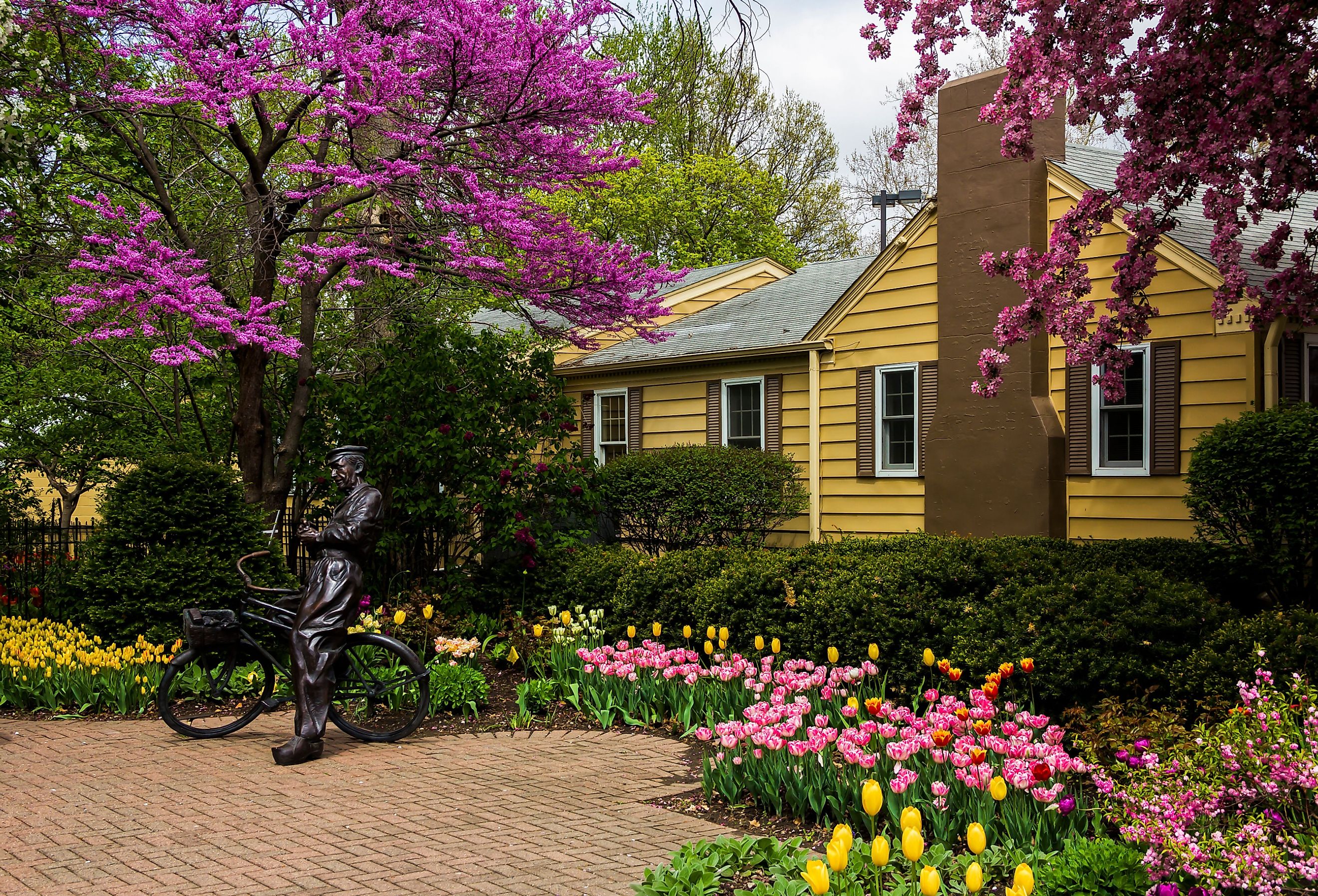
8 Most Memorable Small Towns in Iowa
Dotted throughout the plains and cornfields of Iowa are countless small towns. Unlike some states, these small towns, not their metropolises, drove Iowa’s history. From the beginning, Iowa was divided into counties small enough that no one lived farther than a half day's travel from the county seat and courthouse. With the emergence of railroads, towns were highly motivated to be near them, and some even moved the towns and buildings miles closer for that reason. Other towns formed solely around the railway stations maintained the trains so that locals could use them to ship their goods. Despite these similarities, each town has developed a distinct character shaped by the communities and residents. Many have attractions so unique they are the only of their kind in the world. Here are some of the most memorable small towns in Iowa.
Amana Colonies

One of the most unique settlements in Iowa is the Amana Colonies, a group of seven villages that have resisted modernization since being founded by German immigrants in 1855. The distinctive homes are made of clapboard, brick, and sandstone, and lanterns and old-fashioned gardens line the walkways. Communal areas are emphasized, pointing to the importance of community in the philosophy of the town’s first residents. Together, the colonies have been designated a National Historic Landmark.
A quick visit to the Amana Heritage Society’s Museum provides an introduction to how the town still maintains its self-sufficiency. The restaurants still serve communal-era dishes, and the local industries include breweries, wineries, meat shops, bakeries, metalworkers, blacksmiths, woodworkers, basket weavers, quilters, a woolen mill, and more. The woolen mill is the last of its kind in the state and is still in its original building. The village of High Amana is also home to an authentic old-fashioned general store operated by the fourth generation of the same family. It still sells many of the same items, and many of the original fixtures are still intact, including the tin ceiling and vegetable bins.
Clear Lake
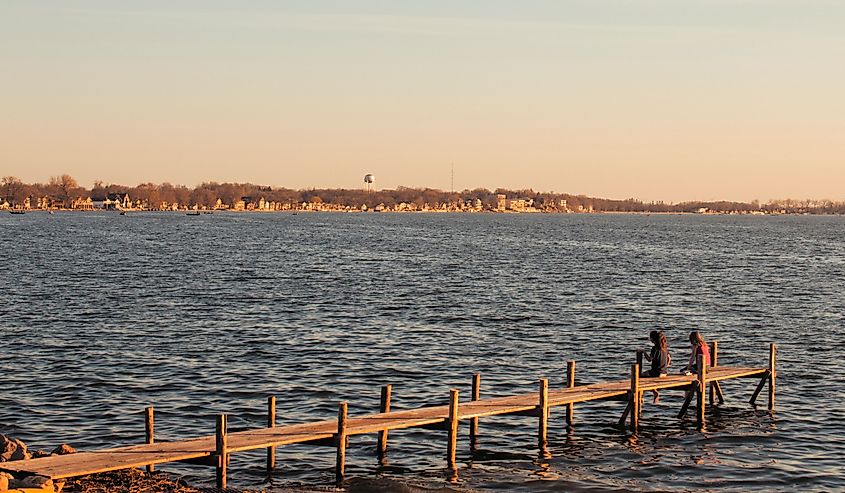
In addition to the lake the town was named after, one of the main draws to Clear Lake is its connection to music history. It is the location of the iconic Surf Ballroom, a fixture of the music industry since it opened in the 1930s. Belied by its bland exterior, the inside is an ocean beach club motif, with nautical murals of palm trees and sailboats, bamboo, and rattan furniture. Palm trees and projected clouds surround the stage, and the ballroom had more than enough space for all the dancers that flocked to the most famous names in big band concerts and, later, rock n’ roll artists such as Roy Orbison, Little Richard, and The Everly Brothers. It was here that Buddy Holly, Ritchie Valens, and The Big Bopper all played their last show before the tragic plane crash just north of town. Today, the path to the memorial site for that crash is marked by a sculpture of a large pair of horn-rimmed glasses.
While in town, popular spots include the sculpture garden and the first fire museum in the state, the Clear Lake Fire Museum, but many flock to the 3,600-acre lake itself. The Lady of the Lake, an original paddle wheel boat, offers daily public cruises during the warmer months. They are about 1.5 hours long, and along the way, the captain narrates historical facts of interest about the boat and the natural surroundings.
Decorah
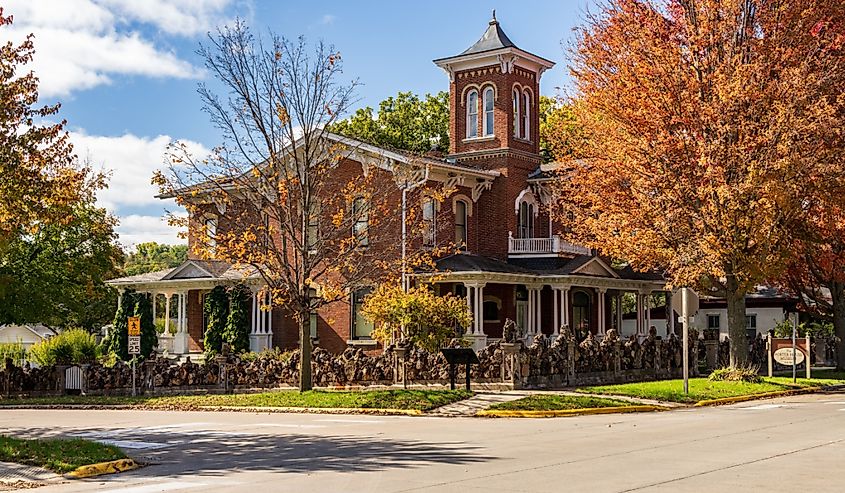
Once named one of the 100 Best Small-Town Getaways, Decorah is a hub of art, specialty shops, and stunning natural beauty. The famous Water Street is the place to go shopping for unique items, antiques, and art.
The Vesterheim National Norwegian-American Museum and Folk Art School comprises twelve buildings and houses the world’s most extensive collection of artifacts of early Norwegian immigrants to the U.S. Since its inception, the Folk Art School has hosted an immersive program of classes on Norwegian folk art.
The Upper Iowa River runs through town, and many gladly grab the opportunity to canoe or kayak along it. Meanwhile, the 11-mile-long Trout Run Trail takes bikers and walkers around the outside of the town, is dotted by a variety of sculptures, and includes a footbridge lit up with LEDs. Maybe the most well-known attraction to Decorah is the 200-foot waterfall, a short drive from downtown in Dunning’s Spring Park. It’s accessed by a short walk from the parking lot across a stone bridge made by a local mason and sits among picturesque limestone cliffs.
Dyersville

For film and sports fans, the most notable thing about Dyersville is that it was the filming location of the farm and baseball diamond of the sports drama Field of Dreams starring Kevin Costner, based on the W.P. Kinsella novel Shoeless Joe. The house on the farm has been set up to how it appears in the movie and now offers a half-hour guided tour, displays of items from the film, and overnight stays. Even more offerings can be found at the Baseball Hall of Dreams Museum!
After touring the baseball diamond, continue the outdoor fun exploring the Heritage Trail, touted as one of the most scenic in the Upper Midwest. It is 26 miles following the old railroad path and has no steep portions, making it perfect for those who avoid more strenuous trails. It travels through treed areas as well as native prairie and a total of eight picturesque mill and mining towns.
Back in town, another major draw is the Plaza Antique Mall, a two-story building with more than 200 dealers of various unique vintage and antique items from vintage cars to toys. This is a popular stop before or after the National Farm Toy Museum across the street!
Elk Horn

Velkommen reads the Danish Windmill & Welcome Center sign in Elk Horn. Danish for “welcome,” this is just the first thing about Danish culture that visitors learn at this historic site. The windmill itself is as authentic as can be. It was built in Denmark in 1848 and rebuilt in Elk Horn in 1976. It is still a working mill whenever the wind is strong enough to power it. Tours of the mill run every day.
Also on the Windmill site grounds is the VikingHjem or “home of a Viking,” a timber frame reconstructed blacksmith combination home and shop. With a distinctive sod roof, it includes architecture and everyday items found throughout Northern Europe and Scandinavia around 900 AD, such as a central fire pit, stools, weapons, furs, and tools of the blacksmith’s trade. Reenactments occur regularly at the site, such as live combats, Viking training, and demonstrations of metal casting.
Visitors can get more at the Museum of Danish America if that is not enough Danish-American history. This 35-acre park has a three-story museum, a genealogy center, a walking trail, and a 1900s-style cabin. As a popular stop on the 142-mile Western Skies Scenic Byway, it’s easy to see why early Danish settlers might have chosen this spot.
Pella

After getting a tase of German, Norwegian, and Danish cultures in the towns above, head to Pella for a little of the same from the Netherlands. The architecture throughout the town is a significant draw for visitors, especially the central Molengracht Plaza and canal with a fully functional drawbridge.
Like a proper Dutch town, Pella is also the home of another reconstructed authentic windmill, the Vermeer Windmill, an 1850s-style grain mill initially built in the Netherlands before being reassembled in Pella in 2002. With five floors to tour, visitors witness the grain storage on the main floor, the giant blades, and the top floor where the milling occurs. It is one of the tallest working windmills on the continent.
Something that is found nowhere else, though, is the town of Pella’s take on the Klokkenspel. This building facade incorporates a large musical clock and contains eight large figures representing people from Pella’s history. One of these is the infamous Wyatt Earp, whose childhood home in Pella has been restored to the time he lived there. Once finished in town, many visitors head down the Volksweg Trail, which means “people’s path,” to Lake Red Rock for canoeing or boating along the Des Moines River.
West Bend

The most memorable spot in West Bend is undoubtedly the Shrine of the Grotto of the Redemption, sometimes called "the Eighth Wonder of the World." The largest man-made grotto in the world, the site takes up a whole city block and comprises nine grottos, each hand-carved from Italian Carrara marble by the artist Father Paul Dobberstein. The grottos depict scenes from the life of Jesus and are covered by the world’s most extensive collection of precious stones, fossils, and petrifactions. Also on site is a gift shop for souvenirs, a museum on the site's history, and a campground. Next door to the Shrine is the Christmas Chapel in Saints Peter and Paul Church, home to a 300-pound amethyst.
The West Bend Historical Society maintains several historically significant buildings, including a replica of a 19th-century sod house, which was common in the area because there was no lumber until the railroad was built and could ship some in. Other buildings include the town’s first post office, the county’s first schoolhouse, and a family-friendly barn museum with historic farm equipment. Another unique historical stop is the Thoreson Museum of Pharmacy, which has authentic pharmacy and apothecary equipment and items from 1909.
Winterset

Winterset’s main claim to fame is as the home of the Bridges of Madison County, central to the bestselling book of the same name and then the adapted romantic drama film starring Meryl Streep and Clint Eastwood. All six bridges can be seen by following the Covered Bridges Scenic Byway. Alternatively, they can be seen underneath by taking a canoe or kayak down the river.
But that is not the town’s only connection to cinematic history, as it is also the birthplace of John Wayne, whose childhood home has been turned into a museum honoring his life and work. The small four-room house was renovated to return to how it looked when he lived there. The John Wayne Birthplace Museum adjacent to the home is a museum of artifacts and a theater showing a documentary about him, with seating from Grauman’s Chinese Theater (the one on the Hollywood Walk of Fame).
For outdoor enthusiasts, the town also maintains Winterset City Park, which, at over 76 acres, boasts the Cutler-Donahue Covered bridge, wood sculptures, three limestone houses, a hedge maze, and the castle-like Clark Tower. Outside town, there are unique farms to tour, like Speckled Hens Farms, the goat farm at Simple Life Farms, and alpaca haven Rusty Stars Alpacas.
Because of the tremendous importance of small towns since the beginning of Iowa's history, visiting here is a truly unique and memorable destination for visitors and residents alike. Without large central cities to rely on for much of their development, these towns and the counties around them had to be self-sufficient. They also tended to develop personalities shaped by the influential people who called them home. The ones named here are just a tiny sample of the variety of architecture, culture, art, parks, lakes, and other stunning natural settings found in this sometimes overlooked Midwestern state.
